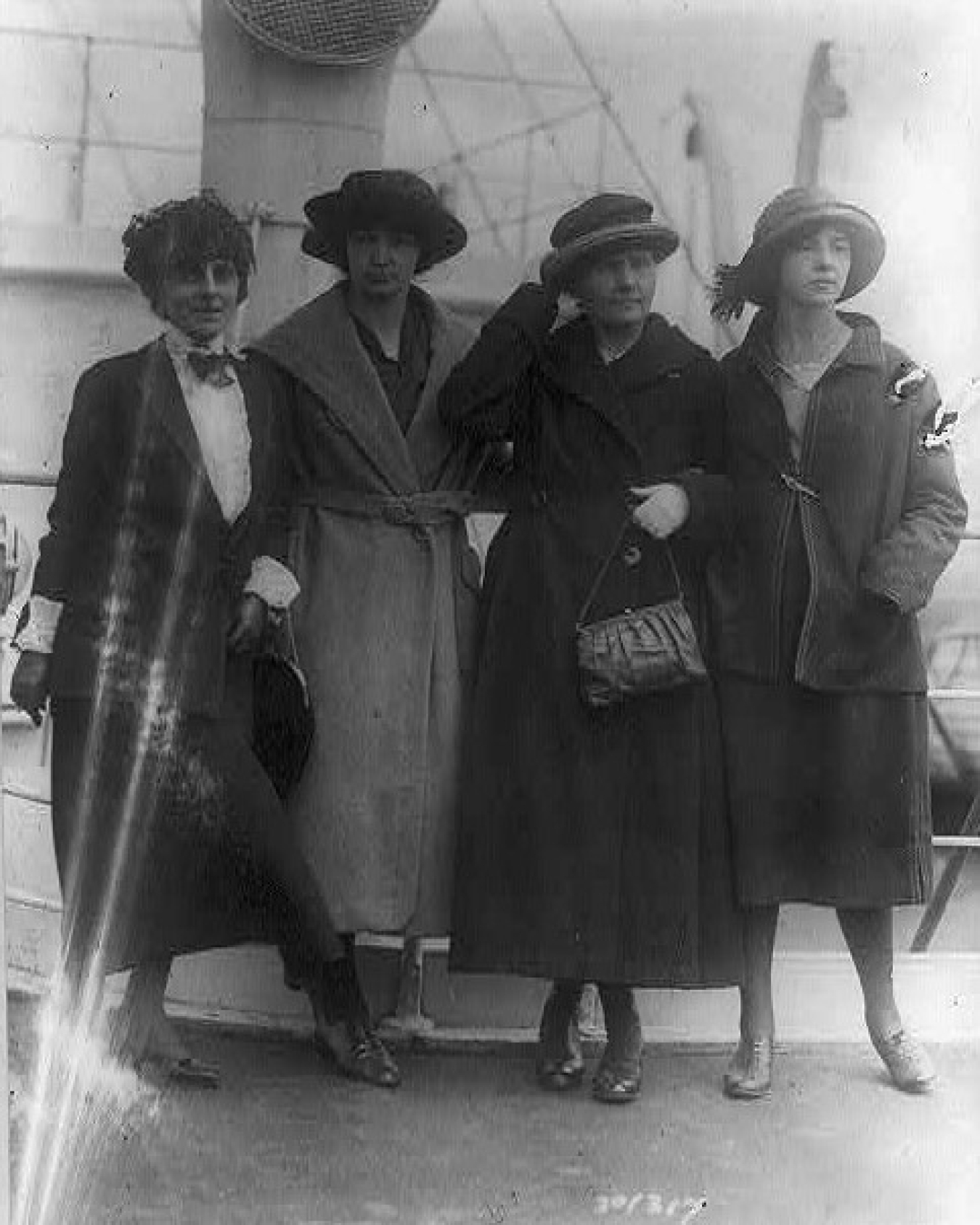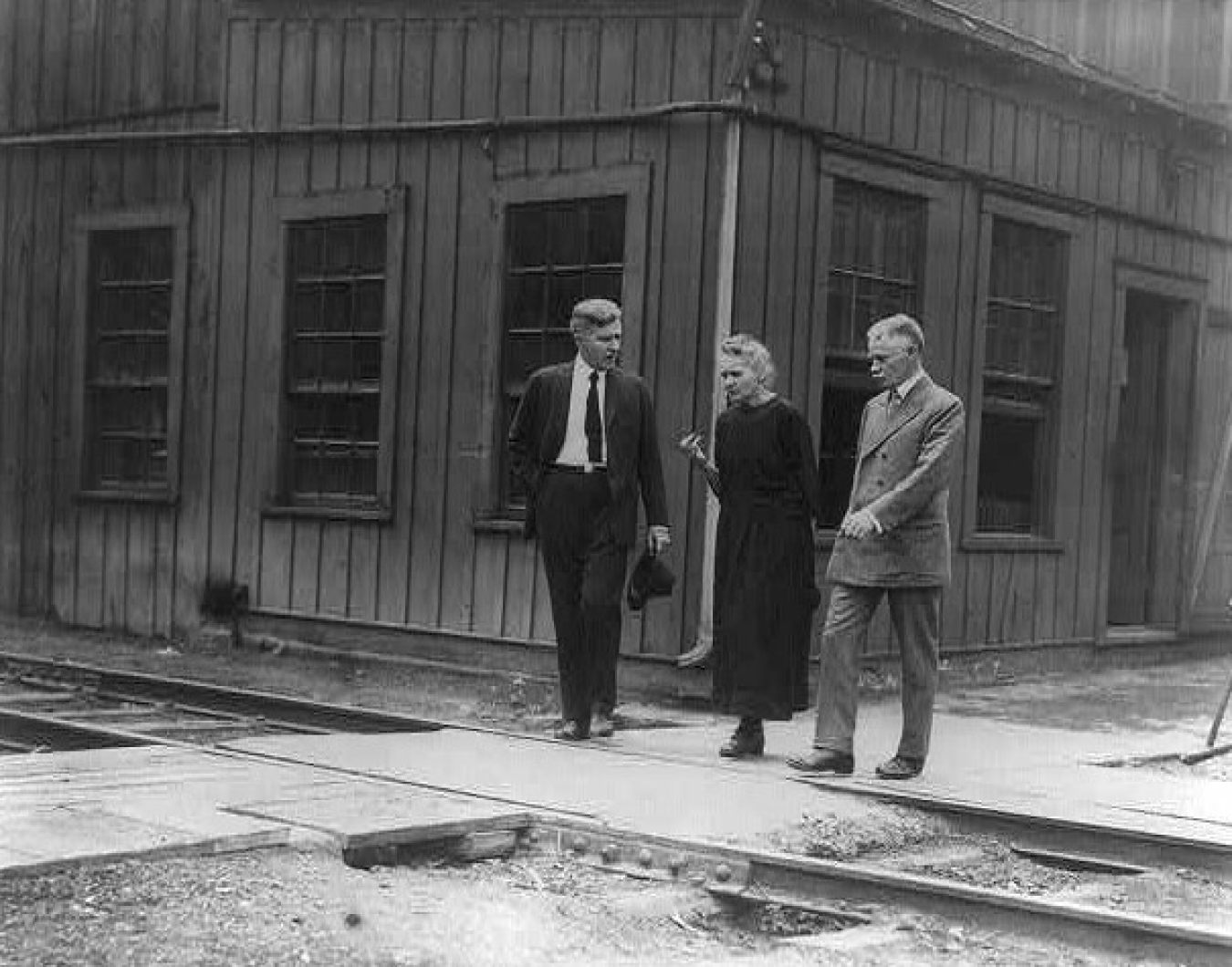Curie's research led her to what is today LM’s Canonsburg site.
November 17, 2020By 1920, French-Polish physicist Marie Curie had made an indelible mark on the sciences, but when an unexpected challenge led her to the United States, one of the places she specifically asked to visit was what is today the Canonsburg, Pennsylvania, Disposal Site managed by the U.S. Department of Energy Office of Legacy Management (LM). This is the story of that unlikely path.
Curie’s pioneering work on the theory of radioactivity and subsequent discovery of radium won her many accolades, but the financial cost of continuing her research on an element that had quickly become popular for its therapeutic properties was a formidable obstacle. At a cost of about $120 per milligram (approximately 1/20th the size of a grain of salt), radium in 1920 was expensive even by today’s standards. As Curie’s supply of the costly element began to dwindle, it threatened to leave her research hanging in the balance.

Marie Curie was the first woman to win a Nobel Prize. Image courtesy of the Library of Congress.
Curie was a two-time Nobel Prize winner and the only person to receive the honor in two separate scientific disciplines — the latter a distinction she still holds today. In 1903, Curie, alongside her husband and another scientist, was awarded the Nobel Prize in Physics for the discovery of radioactivity, a term Curie coined herself. In 1911, she received the Nobel Prize in Chemistry for her discovery of polonium and radium.
Curie stood to profit from her achievements if she patented her findings, but she insisted instead that they be shared widely. As a result, she found herself without the financial means to buy more radium to continue her research.
“Marie Curie had always worked in very humble, very modest conditions,” said Cliff Carpenter, site manager for LM’s Canonsburg site. “She was very unselfish with her discoveries, refusing to have any type of intellectual property claim over them, so she really opened up her findings to the world. She did it for science, not for profit.”
To continue her life’s work, Curie set out on an international mission. Her path to radium procurement ultimately led her to a chemical plant 18 miles south of Pittsburgh at the current location of LM’s Canonsburg site. The month of November marks Curie’s birthday, so in honor of this trailblazing scientist and her invaluable contributions to nuclear exploration, this is a small chapter of her prodigious work.
Curie’s Visit to Canonsburg
American journalist Marie Mattingly Meloney, a trailblazer in her own right, had met Curie and was aware of the financial challenges of continuing her important work. Meloney was keen to raise funds for Curie, whom she had come to admire. Leveraging her network from decades of reporting and as a prominent fixture in New York high society, she turned to her connections, where pockets were deep and fundraising potential was promising. In exchange, Meloney asked the renowned Curie to embark on a speaking tour in the United States.

Marie Curie (second from right) toured the United States with Marie Mattingly Meloney (left) and Curie’s daughters. Image courtesy of the Library of Congress.
Just as adverse to publicity as she was to profit, Curie reluctantly agreed to participate in the tour under several conditions, one of them being a guaranteed visit to the Pittsburgh-based Standard Chemical plant. It was one of the world’s largest producers of radium at the time, taking Curie’s lab production of radium to an industrial scale.
Curie arrived in the United States in May 1921 to embark on the speaking tour. With funding secured, she set off for her visit to the Standard Chemical plant where she toured the facility and spoke with company leaders about their progress in the field of radium production. But while Curie had succeeded in sustaining her work, the Standard Chemical plant was destined for a different fate.
Standard Chemical Plant Becomes LM’s Canonsburg Site
As the only producer of radium on the East Coast, Standard Chemical Company transported its materials from Colorado’s Paradox Valley to Canonsburg. This material came from sites that LM also manages today, including the Naturita, CO Disposal/Processing Site. However, in the early 1920s, Belgium identified sources of radium production materials that were far richer than those found in the United States, and Standard Chemical Company couldn’t compete, so it shut down just one year after Curie’s visit.

Marie Curie (center) tours the Standard Chemical plant in Canonsburg, Pennsylvania, with plant manager Louis F. Vogt (left) and company president James C. Gray (right). Image courtesy of the Library of Congress.
The Standard Chemical plant remained shuttered until it was purchased by Vitro Corporation of America. The new owners acquired the area for the radium and uranium salts left on the site from Standard Chemical Company’s activities. Vitro Corporation became a uranium supplier for the federal government from 1942 to 1957 during the Cold War effort. DOE was responsible for cleaning up the Canonsburg site in 1978, securely storing its radioactive materials in a disposal cell. LM took ownership of the Canonsburg site when the office was established in 2003 and has since conducted regular monitoring and maintenance efforts to ensure the site remains protective of human health and the environment.
While Canonsburg is the only LM site that Marie Curie ever set foot on, her connection to the office and its mission extends far beyond the few hours she spent in the area.
“Our mission at LM is to support the legacy of the nation’s nuclear activities, so in a way, we’re at the end of the cycle that Curie began. It’s coming full circle — from radioactivity’s discovery, to the management of its effects,” Carpenter said. “Curie’s research was conducted for the public good, and it’s that inherent sense of public service that also connects Curie to LM. As a federal office, we’re tasked with serving U.S. taxpayers, so we operate with a similar mindset, ensuring our sites are secure for the public and the environment.”

